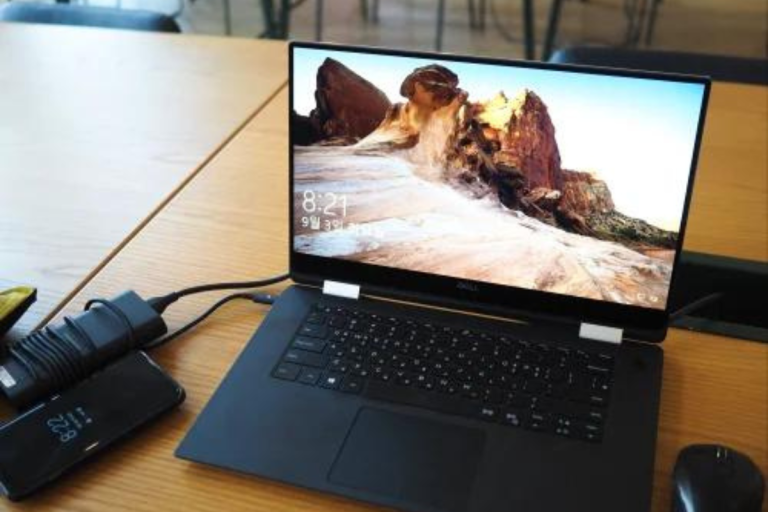5 Best Laptop Mechanical Engineering Students 2024
Are you a budding mechanical engineer looking for the best laptop to support your studies? Look no further! We understand the struggle of finding the perfect device that meets all your needs without breaking the bank. In this comprehensive guide, we will walk you through the essential features, budget-friendly options, and expert recommendations to help you make an informed decision.
Best laptop mechanical engineering students
| Serial No. | Product Name | Check Price |
| 1. | Dell XPS 15 | Check Price |
| 2. | Lenovo ThinkPad P52 | Check Price |
| 3. | HP Spectre x360 | Check Price |
| 4. | ASUS ROG Zephyrus G14 | Check Price |
| 5. | Acer Predator Helios 300 | Check Price |
1. Dell XPS 15
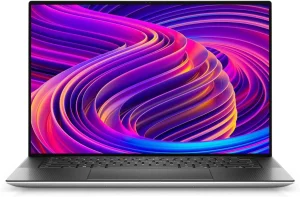
| Specification | Details |
| Processor | Intel 11th Generation Core i7-11800H 2.30GHz |
| Display | 15.6″ (3456 x 2160) TouchScreen |
| Graphics | NVIDIA RTX 3050 4GB GDDR6 |
| RAM | 16GB DDR4 |
| Storage | 512GB NVMe Solid State Drive (SSD) |
| Operating System | Microsoft Windows 10 Professional |
The Dell XPS 15 is powered by the latest Intel 11th Generation Core i7 processor, delivering exceptional performance for resource-intensive tasks. Whether you’re running complex simulations or designing intricate models, this laptop can handle it all with ease. The 15.6″ TouchScreen display offers stunning visuals, allowing you to work with precision and clarity.
One standout feature of the Dell XPS 15 is its custom-tailored configuration. Out of the box, it is ready to tackle the most commonly needed tasks for mechanical engineering students. There’s no need to spend time removing bloatware or optimizing settings. Additionally, the laptop comes with a 90-day warranty and tech support, ensuring a smooth and secure introduction to your academic journey.
Pros:
- High-performance processor for smooth multitasking
- TouchScreen display for enhanced productivity
- Ample storage space for large engineering files
- Custom-tailored configuration for hassle-free setup
- 90-day warranty and tech support for peace of mind
Cons:
- Limited graphics memory for intensive 3D rendering
- Could benefit from additional RAM for future-proofing
2. Lenovo ThinkPad P52
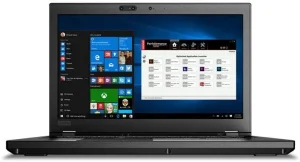
| Specification | Details |
| Warranty | 18 Months |
| Storage | 512GB SSD |
| RAM | 32GB |
| Processor | Intel Core i7 2.60 GHz |
The Lenovo ThinkPad P52 offers an 18-month warranty, providing peace of mind and ensuring that your investment is protected. With a generous 512GB SSD, you’ll have ample storage space for all your engineering files, from CAD designs to project documentation. The 32GB of RAM allows for seamless multitasking, enabling you to work on resource-intensive applications without any lag.
Powered by an Intel Core i7 2.60 GHz processor, this laptop delivers blazing-fast performance. Whether you’re running complex simulations or rendering 3D models, the ThinkPad P52 can handle it with ease. The laptop’s robust design ensures durability, making it suitable for the rigors of engineering work.
Pros:
- Long 18-month warranty for added peace of mind
- Ample storage space for all your engineering files
- High RAM capacity for smooth multitasking
- Powerful Intel Core i7 processor for demanding tasks
- Robust and durable design for long-term use
Cons:
- Relatively heavy and bulky, which may not suit everyone’s portability needs
- Battery life could be improved for all-day productivity
3. HP Spectre x360
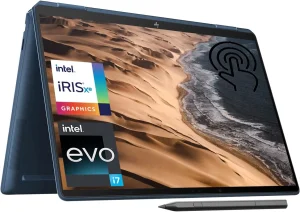
| Specification | Details |
| RAM | 16GB |
| Storage | 512GB PCIe NVME M.2 Solid State Drive |
| Processor | Intel Evo platform 12th Generation Core i7-12700H |
| Graphics | Intel Iris Xe Graphics |
| Display | 16-inch diagonal, 3K+ IPS |
| Operating System | Windows 11 Home |
The HP Spectre x360 boasts a whopping 16GB of high-bandwidth RAM, allowing you to effortlessly run multiple applications and browser tabs all at once. The 512GB PCIe NVME M.2 Solid State Drive ensures lightning-fast bootup times and rapid data transfer, making your engineering tasks a breeze.
Equipped with the Intel Evo platform 12th Generation Core i7-12700H processor and Intel Iris Xe Graphics, this laptop delivers exceptional performance for demanding engineering tasks. From CAD modeling to running simulations, the Spectre x360 can handle it all with ease. The 16-inch diagonal, 3K+ multitouch-enabled display with Corning Gorilla Glass NBT provides a dazzling and immersive visual experience.
Pros:
- Ample RAM for smooth multitasking
- Fast and spacious solid-state drive
- Powerful processor and graphics for demanding engineering tasks
- Stunning and immersive display
- Sleek and stylish design
Cons:
- Limited port selection
- Battery life could be improved for extended productivity
4. ASUS ROG Zephyrus G14
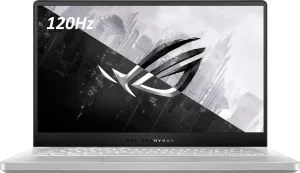
| Specification | Details |
| Display | 14-inch Full HD, 1920 x 1080, 120Hz refresh rate |
| Processor | AMD Ryzen 9 4900HS |
| RAM | 16GB DDR4 |
| Storage | 1TB SSD |
| Graphics | NVIDIA GeForce RTX 2060 Max-Q |
| Operating System | Windows 10 Home |
The ASUS ROG Zephyrus G14 boasts a stunning 14-inch Full HD display with a refresh rate of 120Hz, ensuring smooth visuals and vibrant colors. The AMD Ryzen 9 4900HS processor, with its 8 cores and clock speed of up to 4.30GHz, delivers exceptional performance for all your mechanical engineering tasks.
With 16GB of DDR4 RAM and a 1TB SSD, this laptop provides ample memory and storage for your projects and files. The NVIDIA GeForce RTX 2060 Max-Q graphics card, backed by 6GB of dedicated video memory, ensures that your laptop is ready for virtual reality experiences and demanding engineering simulations.
Pros:
- High-performance AMD processor
- Generous amount of RAM and storage
- Powerful graphics card for demanding tasks
- Immersive display with a high refresh rate
- Lightweight and portable design
Cons:
- Limited connectivity options
- Battery life could be better for extended use
5. Acer Predator Helios 300
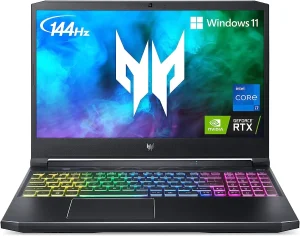
| Specification | Details |
| Processor | 11th Generation Intel Core i7-11800H |
| RAM | 16GB DDR4 3200MHz |
| Storage | 512GB PCIe Gen 4 SSD |
| Graphics | NVIDIA GeForce RTX 3060 (6GB dedicated GDDR6 VRAM) |
| Display | 15.6-inch Full HD IPS LED-backlit, 144Hz refresh rate, 3ms response time |
| Connectivity | Intel Killer DoubleShot Pro with Ethernet E2600 and Wi-Fi 6 AX1650i |
The Acer Predator Helios 300 is armed with the mighty 11th Generation Intel Core i7-11800H processor, featuring 8 cores and 16 threads. This powerhouse of a processor divides and conquers any task, ensuring you have the speed and power to tackle your most intensive engineering projects or indulge in some intense gaming sessions.
With the NVIDIA GeForce RTX 3060 graphics card, powered by the award-winning Ampere architecture, you can expect nothing short of ultimate gaming performance. The inclusion of Ray Tracing Cores, Tensor Cores, and streaming multiprocessors supporting DirectX 12 Ultimate takes your visual experiences to a whole new level.
Pros:
- Impressive processing power
- Stunning graphics performance
- Fast and responsive display
- High-speed storage
- Dual connectivity options
Cons:
- Limited storage capacity
- Relatively shorter battery life
Buying Guide: 6 Factors to Consider When Choosing the Best Laptop for Mechanical Engineering Students
Are you a mechanical engineering student on the hunt for the perfect laptop to support your studies and projects? Look no further! In this buying guide, we will walk you through the essential factors to consider when selecting a laptop that meets your specific needs. By the end, you’ll be equipped with the knowledge to make an informed decision and we’ll also suggest a couple of laptops that we believe would be a great fit for you. Let’s dive in!
1. Processing Power
Mechanical engineering software and applications can be resource-intensive, so a laptop with a powerful processor is crucial. Look for laptops equipped with Intel Core i5 or i7 processors, or AMD Ryzen processors, as these provide excellent performance for engineering tasks.
2. Graphics Capability
As a mechanical engineering student, you’ll likely be working with 3D modeling and simulation software. To ensure smooth rendering and efficient workflow, opt for a laptop with a dedicated graphics card. NVIDIA GeForce GTX or Quadro series GPUs are highly recommended for their reliability and performance.
3. RAM and Storage
Multitasking is common in engineering work, so having ample RAM is essential. Aim for a minimum of 8GB, but if your budget allows, go for 16GB or more. Additionally, consider the type of storage. Solid State Drives (SSDs) provide faster boot times and quicker access to files, while Hard Disk Drives (HDDs) offer larger storage capacities at a lower cost.
4. Display and Size
A laptop with a clear, high-resolution display is vital for mechanical engineering tasks. Look for laptops with at least a Full HD (1920×1080) resolution and IPS panels for accurate color reproduction. As for size, a 15.6-inch display strikes a good balance between portability and screen real estate.
5. Portability and Battery Life
As a student, you’ll likely be carrying your laptop around campus, so portability is important. Consider laptops that are lightweight and slim without compromising on performance. Additionally, check the battery life of the laptop. Aim for at least 6-8 hours of battery backup to ensure you can work on the go without constantly searching for a power outlet.
6. Connectivity and Ports
Ensure that the laptop you choose has an adequate number of USB ports, including USB 3.0 or higher for faster data transfer. Additionally, look for laptops with HDMI or DisplayPort outputs for connecting to external displays or projectors. Having an SD card reader and an Ethernet port can also be beneficial.
1. What is the ideal processor for a mechanical engineering student’s laptop?
The ideal processor for a mechanical engineering student’s laptop would be an Intel Core i5 or i7, or an AMD Ryzen processor. These processors offer excellent performance for engineering tasks.
2. Do I need a dedicated graphics card for mechanical engineering software?
Yes, having a dedicated graphics card is highly recommended for mechanical engineering software. Look for laptops with NVIDIA GeForce GTX or Quadro series GPUs for smooth rendering and efficient workflow.
3. How much RAM do I need for my mechanical engineering laptop?
For multitasking in engineering work, aim for a minimum of 8GB of RAM. However, if your budget allows, it’s better to opt for 16GB or more for smoother performance.
4. What display resolution should I look for in a laptop for mechanical engineering?
Look for laptops with at least a Full HD (1920×1080) resolution. This ensures a clear and detailed display, which is important for engineering tasks.
5. Is a lightweight and portable laptop necessary for mechanical engineering students?
While portability is not a strict requirement, it can be beneficial for students who need to carry their laptops around campus. Consider a laptop that strikes a balance between performance and portability, as you wouldn’t want to compromise on power for the sake of weight.
Conclusion
Choosing the best laptop for mechanical engineering students requires careful consideration of several key factors. From processing power and graphics capability to RAM and storage, each aspect plays a crucial role in ensuring a smooth and efficient workflow.
Additionally, a high-resolution display, portability, and sufficient connectivity options are also important considerations. By taking the time to evaluate your specific needs and budget, you can find the perfect laptop that will support you throughout your mechanical engineering studies.
